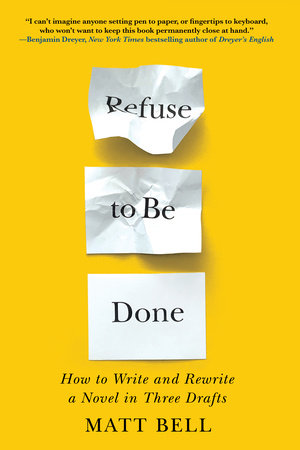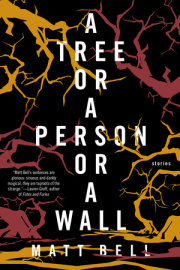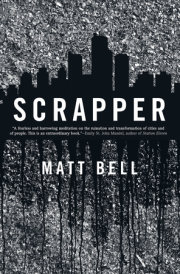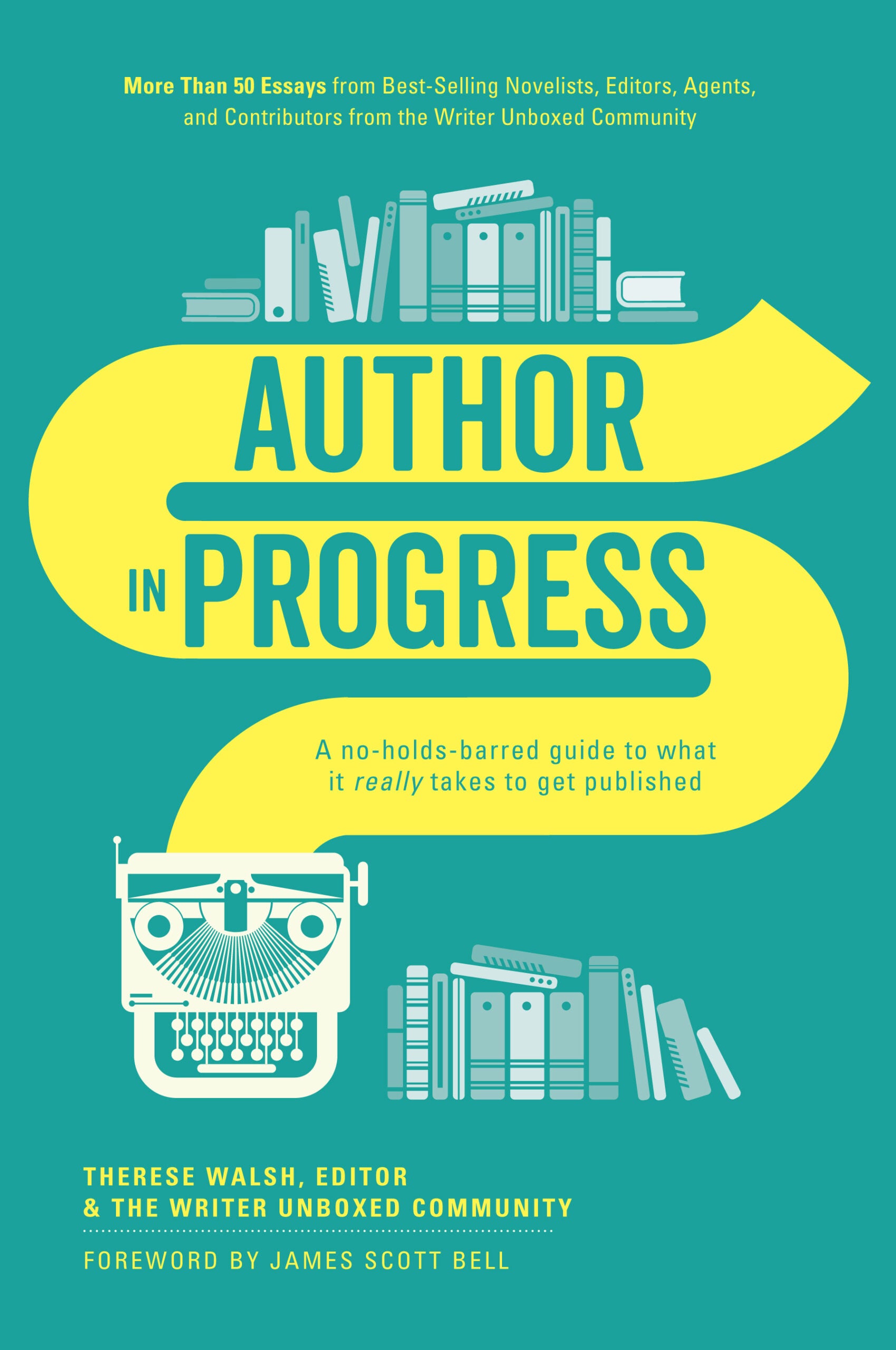Introduction: The Three Drafts
You are writing a novel. You are writing a book.
Go ahead and tell yourself. And then tell yourself again.
Maybe say it a few more times, for luck.
No matter what phase in the process you’re in when you read this page—whether you’re already laboring on your novel, whether you’ve not yet written a word—I implore you to continually affirm that you are writing a novel, that you are writing a book. Don’t diminish, don’t equivocate, don’t find some way to keep from claiming the work.
If only to yourself, if only in the tiniest whisper, say it: I am writing a novel.
If it’s the first time you’ve ever said this to yourself, I hope it feels good. If you’ve been saying it for years already, I hope it’s a rededication of your commitment to a pursuit to which you’ve likely already dedicated many long hours. But what is it that you’re doing, exactly, when you’re writing a novel, filling the hours spent at your desk? Maybe your focus is on telling a gripping story, or bringing great characters to life, or plotting intricate mysteries, or inventing new worlds, or exploring family dramas, or capturing the stream-of-consciousness thoughts of one particular person as precisely as possible. Whatever your primary aim is for your novel, it doesn’t on its own tell you what the task of going from the empty page to a finished manuscript will look like, in practical terms.
This book is one attempt to fill in that blank, by offering actionable steps for every phase of the process as it applies to many of the kinds of novels being written and published today.
Samuel R. Delany once said that “eighty-five to ninety-five percent of my work is rewriting and revision.” That’s been my experience, too, although I didn’t always recognize it. As a student, I took years of creative writing workshops, and in most of those workshops, I was required to turn in an end-of-the-semester revision, demonstrating how I’d worked with the feedback I’d received from my classmates and my teachers. But requiring students to revise isn’t the same as teaching students how to do it. In the absence of strategy, I relied on brute repetition to improve my stories: I wrote draft after draft, covering printed pages in red ink before returning to the computer to input countless changes I was never sure were necessarily improvements.
Given sufficient time and a lot of effort, I was able to bully many of my rough drafts into respectable submissions and, then, with the help of kind editors, into readable stories capable of being printed in magazines and books. But when I started writing novels, I realized that as hard as short stories had been to revise, rewriting a novel draft of three hundred pages or so was far more daunting—and that would’ve been the case even if my first novel draft hadn’t come out more broken than my average short story.
Over the years, I’ve come to believe that revision and rewriting are most of what good writing entails: writing a successful book isn’t only making the most of the first burst of inspiration, as pleasurable as that is. It’s also the sustained and often small-scale work of making a promising manuscript better hour by hour, day by day, slowly but steadily moving it closer to your imagined ideal. So, while this is theoretically a book about revision, it’s also a step-by-step guide to writing a novel—and because I believe rewriting and revision necessarily occur at every stage of the process, I’ve organized this guide into three large chapters, each devoted to one of what I think of as the “three drafts.”
You might be reading this book with a blank page in front of you, or with a partial draft already under way. In either case, you can employ the tactics in the “First Draft” chapter to practice generative revision, the kind of rewriting that will help you continue drafting and eventually finish the first version of your novel. This is where you’ll find tactics for sustaining and extending your story and for overcoming common roadblocks and frustrations. At this stage, I advocate an exploratory, organic, and above all playful approach, not because it’s the only way to draft a novel, but because it’s the most enjoyable way I know how.
When I finished the earliest draft of what would become my first published novel, I realized I didn’t know how to approach improving so much material at once. The strategies in the “Second Draft” chapter emerged from my need to shape the rough, unwieldy material of a first draft toward a better-made, better-plotted second, which I did by a process I’ll call narrative revision, because the big decisions you’ll make during this draft will be about how to restructure and rewrite the dramatic material of the story to maximal effect. In many ways, this is the hardest turn to make, but it’s also one of the more fulfilling parts of the process, as it’s the stage where you’ll make the most significant improvements to your plot, transforming your novel from draft to book.
In the “Third Draft” chapter, you’ll find a layered approach to “final” edits, where you’ll ensure, by a series of smaller and more workable tasks, that your now well-structured, well-plotted book is as enjoyable as possible. You can think of this stage as polishing revision, but you might plan to make dramatic changes here, too.
You may already have noticed that this first-draft, second-draft, third-draft structure is rather tidy. These “drafts” might be easier to think of as “stages,” with the understanding that you might linger in one stage for a long time and then breeze through another; you might also return to a previous stage’s strategies at any time or repeat a stage more than once, if necessary. More than likely, at certain points in the work, you’ll find yourself employing strategies from all three stages at once. Because of this, there’s no one right way to read this book: if you’re starting from scratch, you might move through this book in a linear fashion, but I hope you’ll also feel free to try the revision tactics ahead in whatever order you wish, adapting my process to yours.
Take Only What’s Useful The novel-writing process described in this book is a version of my own, and therefore it necessarily proceeds from my personal preferences regarding craft, audience, and story. (It also most likely re-creates my blind spots, although I’ve done my best to address those where I can; one goal of all good teachers has to be not to pass on their own lacks to their students.) While my own novels have been promoted as literary fiction of the speculative, genre-hopping variety, my interests as a reader and a student of craft are more varied and wide-ranging and, I hope, are getting more so every year. I worked at a small publishing house for several years, where I edited novels by writers working in a variety of styles, and for the past decade I’ve been teaching novel writing to students with unique goals, aesthetics, and intended audiences, all of which I try my best to honor and encourage in our working together.
All this is only to say that while I believe much of what I suggest ahead will work for many different kinds of fiction writers, it’s more than okay if certain tactics or techniques don’t work for you or feel at cross-purposes with the kind of novel you want to write. The aim of this book isn’t to make anyone into the kind of novelist I am—anything but that!—but to help you become more yourself, on the page and throughout your process. So, if some of the forthcoming advice doesn’t feel like it applies to your novel, go ahead and discard what doesn’t help or, better yet, subvert it: there’s as much to be gained by actively opposing a craft lesson as there is in following it.
This book is here to serve you and your book. Only what’s useful to you applies.
Copyright © 2022 by Matt Bell. All rights reserved. No part of this excerpt may be reproduced or reprinted without permission in writing from the publisher.









